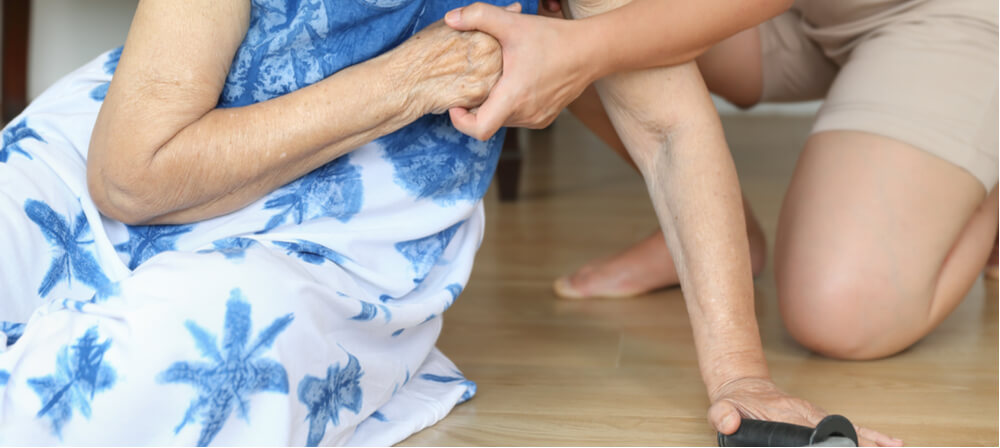Aging Independently: How To Manage Your Fall Risk
March 8, 2023
Categories: Geriatrics, Stay Active, Wellness
Falls are far too common among adults 65 and older. In fact, one out of every four older Americans has reported falling. Unfortunately, falls are the leading cause of injury-related Emergency Department visits, hospitalizations, and deaths among older Americans.
Saint Alphonsus offers free classes that provide older adults a friendly and safe exercise program to help reduce the risk of falling. Fit and Fall Proof Classes are offered in Nampa and Boise.
Thankfully, falling is not a normal part of aging. You can take steps to prevent them, and these guidelines below can help:
Speak Up
More than half of those who fall don’t tell their healthcare providers about it. So talk to your doctor right away if you’ve fallen, if you’re afraid of falling or even if you feel unsteady when walking or standing. They can help.
Have a Balance Assessment
If you think you may be at risk for falling, have a comprehensive balance assessment. Mount Carmel offers a Falls and Balance Program that uses state-of-the-art diagnostic equipment to evaluate each system your body uses to maintain balance — including your inner ear, eyes, muscles and joints and brain – to give you valuable information about if you may be at risk for falling and why. It also includes targeted therapeutic interventions and best-practice treatment protocols should you need them.
Keep Moving
Stay active! Engaging in physical activity can help prevent falling. Going for a walk every day, even if it's just around your house, is a great way to exercise. Look for exercise classes online that you can do conveniently from home at any time of the day. Choose classes that include gentle, slow motions to improve your strength, flexibility, coordination, and balance.
If you are afraid to exercise or increase your activity levels because of bad balance, a fear of falling, or a fear of making existing pain worse with activity, ask your doctor to refer you to a physical therapist. The therapist can customize a safe exercise program and supervise you to help you ease the aches and pains and lower your risk of falling.
Get Annual Exams
Some health issues may increase the risk of falling, so be sure to get an annual physical checkup. You should have a vision screening once a year, too, and update your eyeglasses prescription as needed.
Check Your Medications
Some medications have side effects like dizziness and drowsiness. That’s why it’s important to have a regular medication review with a pharmacist or healthcare provider. Be sure to bring any prescriptions, over-the-counter medications, vitamins, and supplements ― whether you take them regularly or occasionally ― to your review and talk to your provider about which ones might be stopped, reduced or switched if they might be putting you at risk for falls. You should also ask if taking Vitamin D supplements can help improve your nerve, muscle, and bone health.
Make Your Home Safer
Most falls happen at home. That’s why it’s vital to keep your house clutter-free. Remove any small throw rugs or use double-sided tape to secure them to the floor. Add grab bars in the bathroom next to and inside the tub and next to the toilet. And make sure your staircases have handrails and your home has lots of light. More than 10,000 Americans turn 65 each day, so the importance of falls prevention is only increasing. Take these preventive measures yourself and encourage others to do the same so you can all live longer, happier, healthier more active lives.
Article originally appeared on the Mt. Carmel Health System website.
